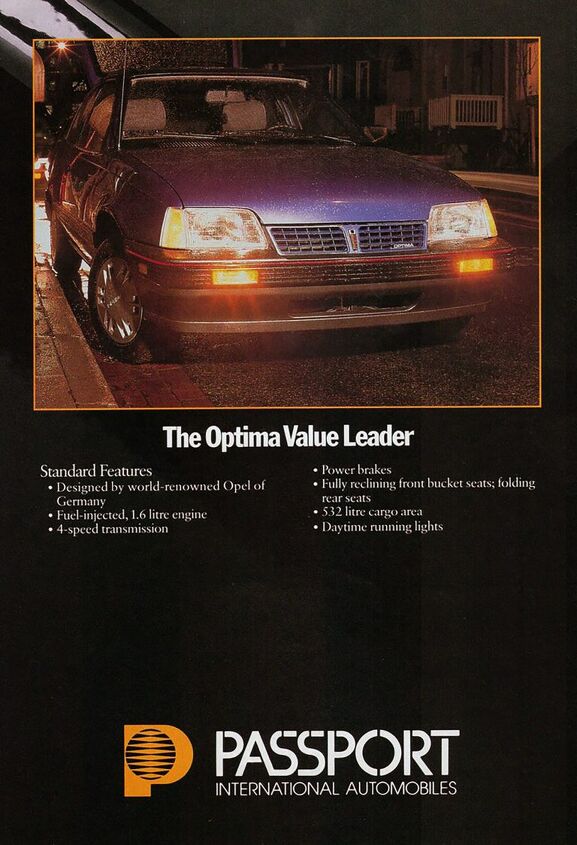#distribution
Abandoned History: General Motors' Passport and Asna, Total Brand Confusion (Part II)
We started our coverage of GM’s Eighties and Nineties branding adventures last week, with the short-lived experiment that was Passport. The dealership network was an amalgamation of GM-owned or influenced brands from Japan, Sweden, and in the case of the Passport Optima, South Korea. Passport lasted from 1987 through 1991 before GM changed directions. In addition to axing an unsuccessful sales channel, Geo and Saturn cars had arrived during Passport’s tenure and made things more complicated. Let’s learn some more about GM’s Canadian dealership networks.
Abandoned History: General Motors' Passport and Asna, Total Brand Confusion (Part I)
In the Eighties and Nineties, General Motors of Canada decided to try new distribution strategies for its imported cars. Like in the recent Dodge Colt series, General Motors had its own captive import cars and trucks that were manufactured by other brands. But because of dealership arrangements in Canada, GM took things a step further than Chrysler and established a separate distribution network for its imported wares. The efforts lead to the thrilling Passport and Asüna brands for the Canadian market. First up, Passport.
Saab Recasts Itself As Auto Industry's Answer To Wal-Mart
Saab has started paying suppliers again (although production hasn’t restarted yet), and CEO Victor Muller is once again all popped-collar confidence as he dismisses the “speed bump” that he blames on negative publicity. But behind Mueller’s yacht-club breeziness and talk of “true Saabs,” major changes are afoot in Saab’s business model. Saab’s deal with Hawtai, the product of a desperate search for support in the midst of a liquidity crisis, has changed how Muller sees the global car business, and as a result he’s shopping what may be Saab’s last meaningful asset: Western dealerships. Muller explains his thinking to Automotive News [sub]
We laughed when the Japanese came. We laughed when the Koreans came. But we will not be laughing when the Chinese come. The Chinese are like a steamroller. It took 67 years to build up our dealer network. It is the biggest asset not on our asset sheet, and these guys buy into it for free. If they make the proper cars, can you image how much simpler it will be to push product through the distribution network that is already there? It is like a railway network that is already there.
Bertel and I have a running bet about whether the first actual Chinese import to the US (not a converted glider) will be a Chinese brand or one of the western brands… but it’s not much of a bet because neither of us can ever commit to picking one brand that seems most likely to bust America’s Chinese car cherry, and our “bets” change on a weekly basis. In any case, though, think it’s safe to say that neither of us saw Saab as playing much of a role in any of the scenarios we’ve discussed.


















Recent Comments